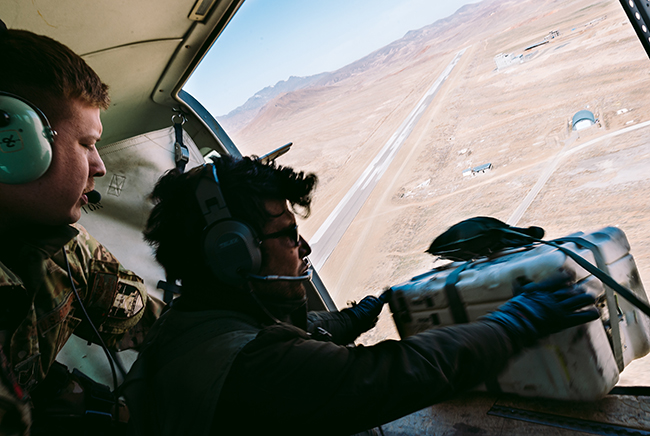
An Afghan Air Force member training with Train, Advise, Assist Command-Air, as part of Resolute Support Mission, works in tandem with an advisor to practice air drops near Kabul, Afghanistan, on March 19, 2017. Air Force photo by SrA. Jordan Castelan.
The US-led Train Advise Assist Command-Air mission in Afghanistan has not effectively taught Afghan forces to perform airdrops and airstrikes on their own, according to a new Pentagon watchdog report.
The Defense Department Inspector General, in an Aug. 12 report, stated that the Afghans’ inability to coordinate airdrops “increases the risk that [Afghan National Defense and Security Forces] units operating in areas without airfields or helicopter landing zones will not receive critical supplies.”
Additionally, the inability of air liaison officers to coordinate strikes “could result in an increase in unsuccessful air-to-ground missions, as well as an increased risk of civilian casualties and fratricide,” the report argued.
Video: Brian Everstine/staff
TAAC-Air fell short of its goal to develop capable tactical air coordinators because of a decision to stop training Afghans on airdrop skills. The DOD watchdog added that TAAC-Air did not ensure that contractor-developed curriculum was detailed enough for the Afghan air liaison officers those contractors train.
Going forward, the IG recommended that NATO Air Command and TAAC-Air improve Afghan training by developing a plan with specific objectives and milestones to measure those forces’ air-to-ground capability.